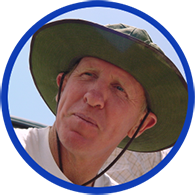

A blast from the past:
In 1988, at the beginning of what became WhisperTech, Don Clucas and I tried a very different Stirling engine layout, a curved cylinder beta.
The idea was that by machining the cylinder, piston and displacer to the same fixed radius curve, side load imposed on the piston and displacer by their connecting rods could be eliminated. Such side loads are a significant source of friction and hence poor performance for low powered Stirling engines.
Further, though an interesting machining exercise, it wasn’t difficult once set up, and in production would not obviously have been more expensive to make than conventional straight parts. It may well have been less expensive because various linkages and components are eliminated.
I expect Don has spent the last 35 years hoping that this prototype had quietly disappeared, but it came to light when I was cleaning out under a bench here last week, and on reflection it has some merit, or at least may be of interest to Stirling obsessives.
Not that I have any plans to take it further at this stage- but someday someone might.
It has a cam-controlled displacer which I would not now contemplate because of friction but this does show that Don and I were concerned about working fluid transfer even back then. I have since built a number of prototype engines (LSM’s 15.4, 16.4 and 20.1) in mainly failed attempts to improve transfer (they all have better transfer but come with costs that largely offset the gains). I haven’t given up on this yet, 37 years and counting. Maybe I should.
Did this curved cylinder engine ever run? I can’t remember, though there doesn’t seem any reason why it shouldn’t have with enough heat. Judging by scorch marks on the hot end, we certainly tried.
It clearly shows the Paul Macready (Gossamer Condor, first successful man powered aircraft) ‘build prototypes quick and dirty’ approach. This is a cost-effective way to test many different ideas as quickly as possible- no frills, no concessions to aesthetics. A useful element in early-stage innovation.
Peter Lynn for the Roger Mahan Heritage Centre, July 2025